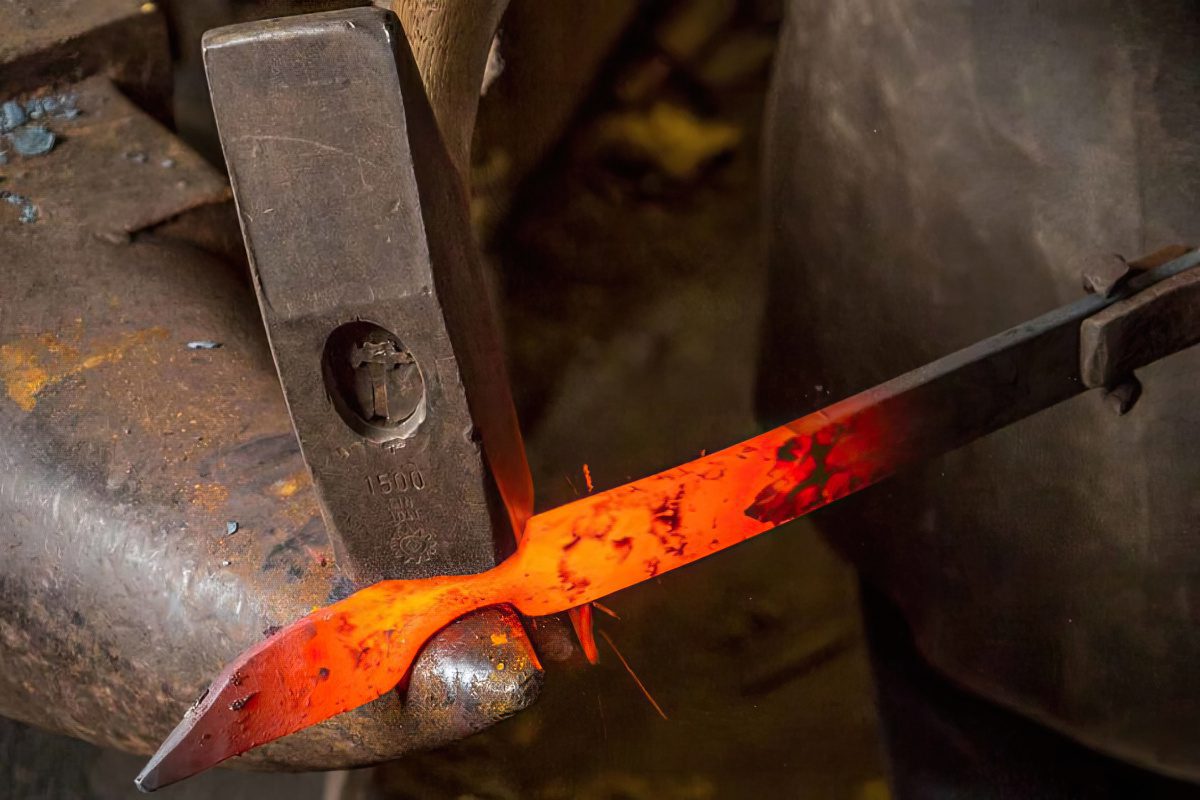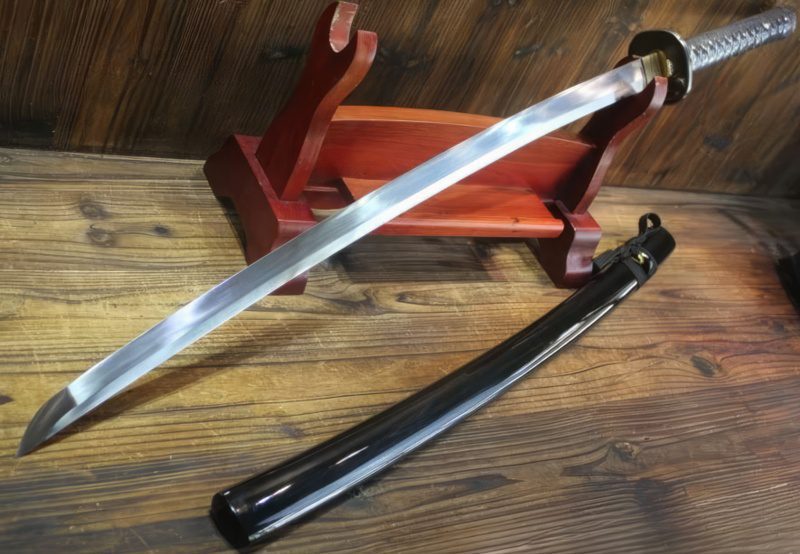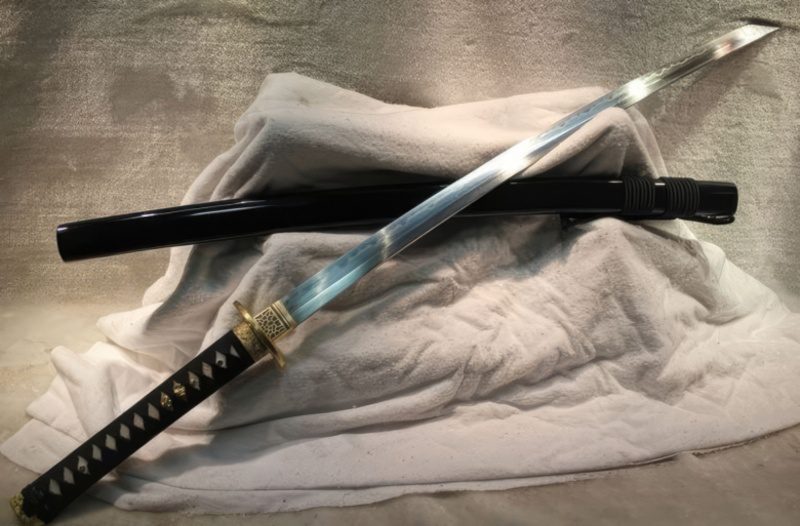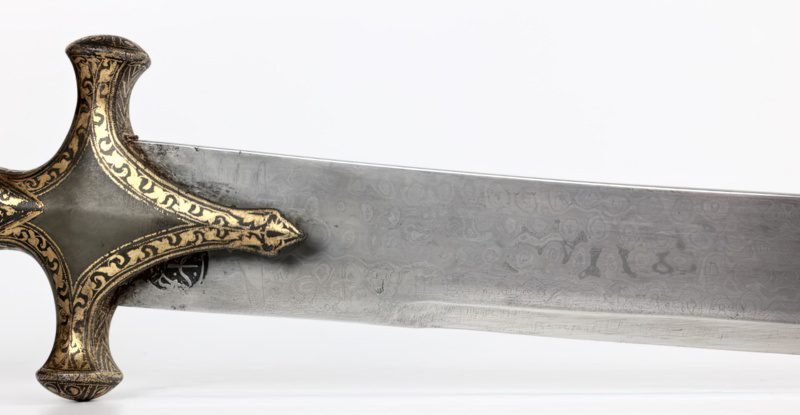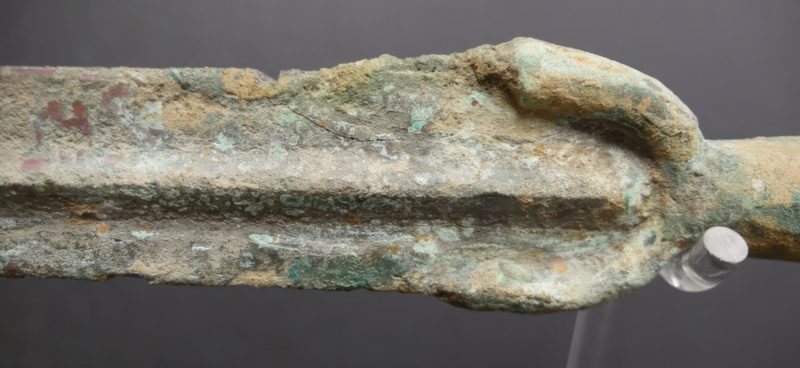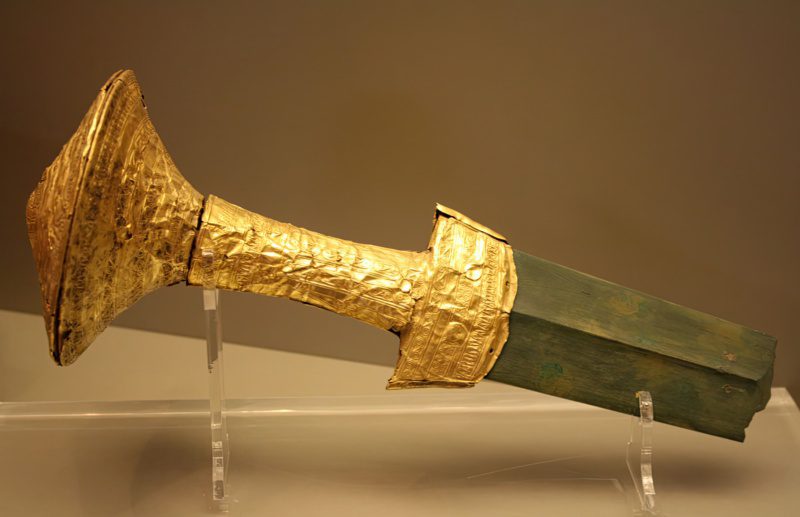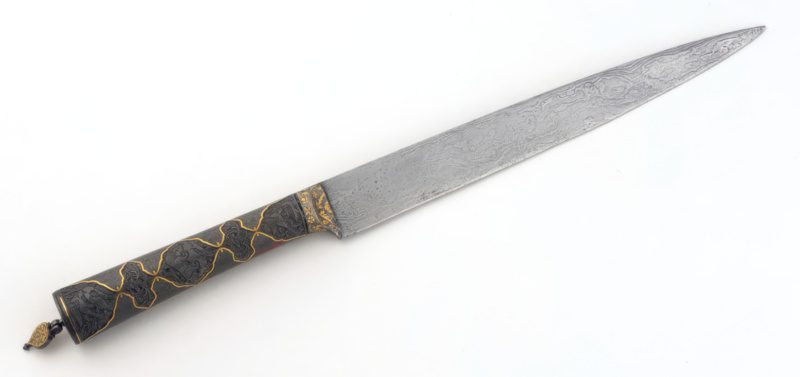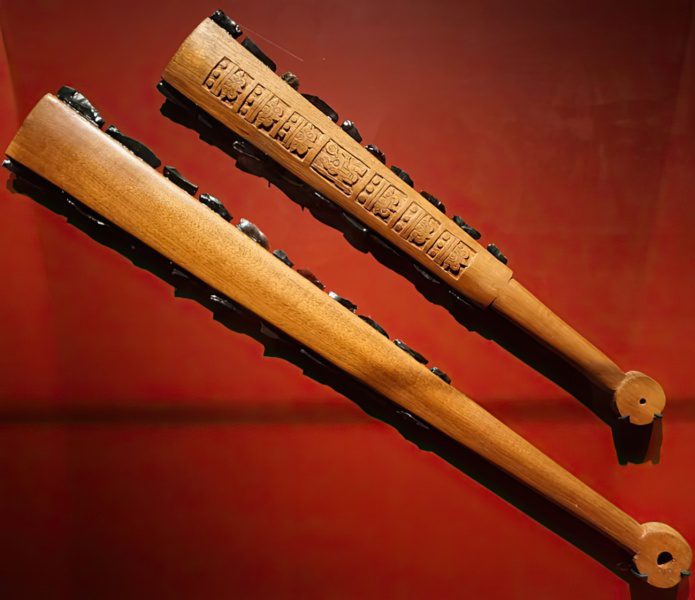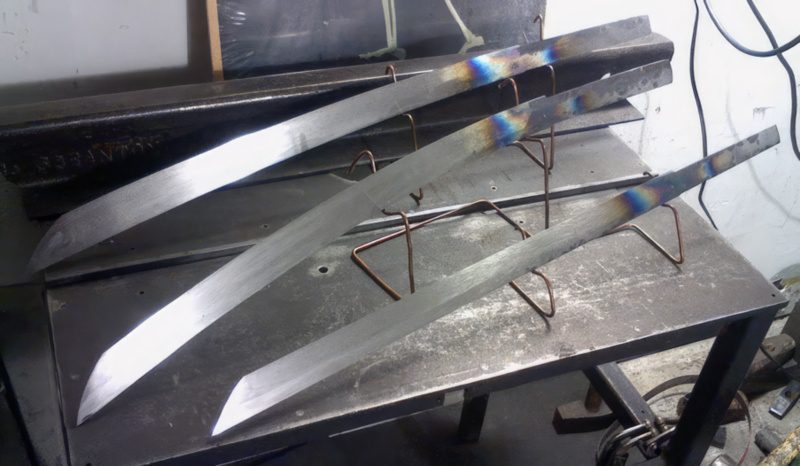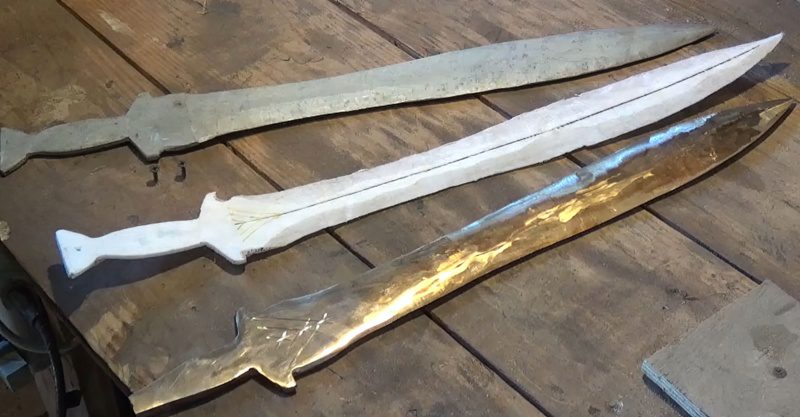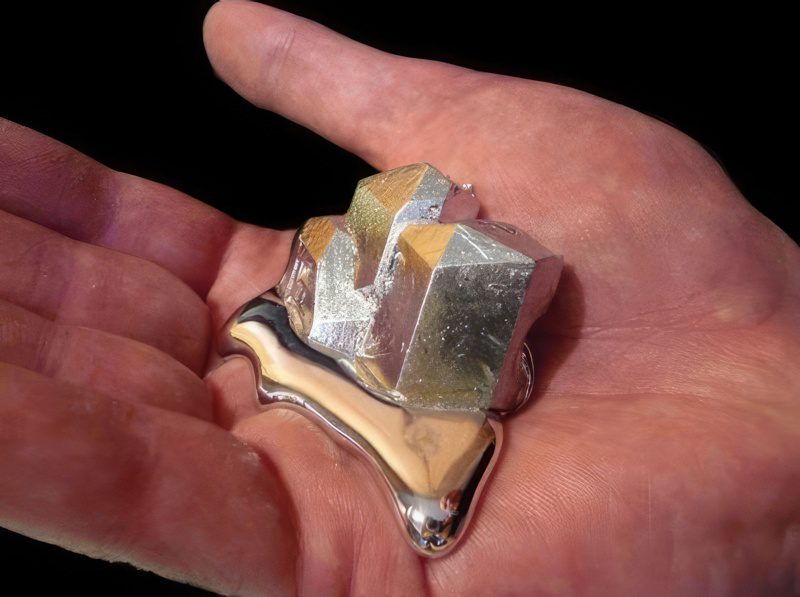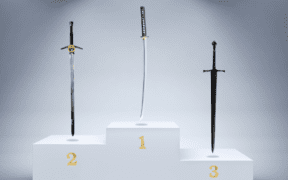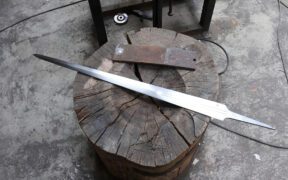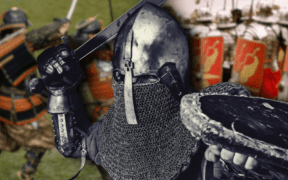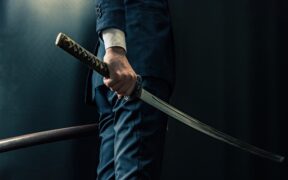u003colu003ern tu003cliu003eu003cspan data-sheets-root=u00221u0022 data-sheets-value=u0022{u0026quot;1u0026quot;:2,u0026quot;2u0026quot;:u0026quot;1. Oakeshott, R. E. (2000, February 1). The Archaeology of Weapons. In Arms and Armour from Prehistory to the Age of Chivalry.n2. Editorial Staff, B. E. (1998, May 1). Weapons and Warfare.n3. McNab, C. (2012, January 1). Knives and Swords. In A Visual History.n4. D. (2015, August 4). Military History. In The Definitive Visual Guide to the Objects of Warfare. DK.n5. Windsor, G. (2018, May 8). The Theory and Practice of Historical Martial Arts.n6. Grant, R. G., u0026amp; Publishing Staff, D. K. (2010, January 1). Warrior. In A Visual History of the Fighting Man.n7. Cohen, R. (2003, August 5). By the Sword. In A History of Gladiators, Musketeers, Samurai, Swashbucklers, and Olympic Champions; 10th Anniversary Edition. Modern Library.n8. Hrisoulas, J. (1987, June 30). The Complete Bladesmith: Forging Your Way to Perfection.n9. Gilgam, M. (2020, January 21). Hardening the Steel.n10. Richards, W. A. (2015, January 6). Forging of Iron and Steel.n11. Oakeshott, E. (1991, January 2). Records of the Medieval Sword.n12. Kapp, L., Kapp, H., u0026amp; Yoshihara, Y. (1987, June 15). The Craft of the Japanese Sword.n13. Löbach, G. (2013, May 28). Damascus Steel: Theory and Practice: Theory and Practice. Schiffer Craft.n14. Burton, R. F. (1987, July 1). The Book of the Sword: With 293 Illustrations.n15. Burton, R. F. (2014, April 1). The Book of the Sword: A History of Daggers, Sabers, and Scimitars from Ancient Times to the Modern Day.u0026quot;}u0022 data-sheets-userformat=u0022{u0026quot;2u0026quot;:513,u0026quot;3u0026quot;:{u0026quot;1u0026quot;:0},u0026quot;12u0026quot;:0}u0022u003eOakeshott, R. E. (2000, February 1). The Archaeology of Weapons. In Arms and Armour from Prehistory to the Age of Chivalry.rnu003c/spanu003eu003c/liu003ern tu003cliu003eu003cspan data-sheets-root=u00221u0022 data-sheets-value=u0022{u0026quot;1u0026quot;:2,u0026quot;2u0026quot;:u0026quot;1. Oakeshott, R. E. (2000, February 1). The Archaeology of Weapons. In Arms and Armour from Prehistory to the Age of Chivalry.n2. Editorial Staff, B. E. (1998, May 1). Weapons and Warfare.n3. McNab, C. (2012, January 1). Knives and Swords. In A Visual History.n4. D. (2015, August 4). Military History. In The Definitive Visual Guide to the Objects of Warfare. DK.n5. Windsor, G. (2018, May 8). The Theory and Practice of Historical Martial Arts.n6. Grant, R. G., u0026amp; Publishing Staff, D. K. (2010, January 1). Warrior. In A Visual History of the Fighting Man.n7. Cohen, R. (2003, August 5). By the Sword. In A History of Gladiators, Musketeers, Samurai, Swashbucklers, and Olympic Champions; 10th Anniversary Edition. Modern Library.n8. Hrisoulas, J. (1987, June 30). The Complete Bladesmith: Forging Your Way to Perfection.n9. Gilgam, M. (2020, January 21). Hardening the Steel.n10. Richards, W. A. (2015, January 6). Forging of Iron and Steel.n11. Oakeshott, E. (1991, January 2). Records of the Medieval Sword.n12. Kapp, L., Kapp, H., u0026amp; Yoshihara, Y. (1987, June 15). The Craft of the Japanese Sword.n13. Löbach, G. (2013, May 28). Damascus Steel: Theory and Practice: Theory and Practice. Schiffer Craft.n14. Burton, R. F. (1987, July 1). The Book of the Sword: With 293 Illustrations.n15. Burton, R. F. (2014, April 1). The Book of the Sword: A History of Daggers, Sabers, and Scimitars from Ancient Times to the Modern Day.u0026quot;}u0022 data-sheets-userformat=u0022{u0026quot;2u0026quot;:513,u0026quot;3u0026quot;:{u0026quot;1u0026quot;:0},u0026quot;12u0026quot;:0}u0022u003eEditorial Staff, B. E. (1998, May 1). Weapons and Warfare.rnu003c/spanu003eu003c/liu003ern tu003cliu003eu003cspan data-sheets-root=u00221u0022 data-sheets-value=u0022{u0026quot;1u0026quot;:2,u0026quot;2u0026quot;:u0026quot;1. Oakeshott, R. E. (2000, February 1). The Archaeology of Weapons. In Arms and Armour from Prehistory to the Age of Chivalry.n2. Editorial Staff, B. E. (1998, May 1). Weapons and Warfare.n3. McNab, C. (2012, January 1). Knives and Swords. In A Visual History.n4. D. (2015, August 4). Military History. In The Definitive Visual Guide to the Objects of Warfare. DK.n5. Windsor, G. (2018, May 8). The Theory and Practice of Historical Martial Arts.n6. Grant, R. G., u0026amp; Publishing Staff, D. K. (2010, January 1). Warrior. In A Visual History of the Fighting Man.n7. Cohen, R. (2003, August 5). By the Sword. In A History of Gladiators, Musketeers, Samurai, Swashbucklers, and Olympic Champions; 10th Anniversary Edition. Modern Library.n8. Hrisoulas, J. (1987, June 30). The Complete Bladesmith: Forging Your Way to Perfection.n9. Gilgam, M. (2020, January 21). Hardening the Steel.n10. Richards, W. A. (2015, January 6). Forging of Iron and Steel.n11. Oakeshott, E. (1991, January 2). Records of the Medieval Sword.n12. Kapp, L., Kapp, H., u0026amp; Yoshihara, Y. (1987, June 15). The Craft of the Japanese Sword.n13. Löbach, G. (2013, May 28). Damascus Steel: Theory and Practice: Theory and Practice. Schiffer Craft.n14. Burton, R. F. (1987, July 1). The Book of the Sword: With 293 Illustrations.n15. Burton, R. F. (2014, April 1). The Book of the Sword: A History of Daggers, Sabers, and Scimitars from Ancient Times to the Modern Day.u0026quot;}u0022 data-sheets-userformat=u0022{u0026quot;2u0026quot;:513,u0026quot;3u0026quot;:{u0026quot;1u0026quot;:0},u0026quot;12u0026quot;:0}u0022u003eMcNab, C. (2012, January 1). Knives and Swords. In A Visual History.rnu003c/spanu003eu003c/liu003ern tu003cliu003eu003cspan data-sheets-root=u00221u0022 data-sheets-value=u0022{u0026quot;1u0026quot;:2,u0026quot;2u0026quot;:u0026quot;1. Oakeshott, R. E. (2000, February 1). The Archaeology of Weapons. In Arms and Armour from Prehistory to the Age of Chivalry.n2. Editorial Staff, B. E. (1998, May 1). Weapons and Warfare.n3. McNab, C. (2012, January 1). Knives and Swords. In A Visual History.n4. D. (2015, August 4). Military History. In The Definitive Visual Guide to the Objects of Warfare. DK.n5. Windsor, G. (2018, May 8). The Theory and Practice of Historical Martial Arts.n6. Grant, R. G., u0026amp; Publishing Staff, D. K. (2010, January 1). Warrior. In A Visual History of the Fighting Man.n7. Cohen, R. (2003, August 5). By the Sword. In A History of Gladiators, Musketeers, Samurai, Swashbucklers, and Olympic Champions; 10th Anniversary Edition. Modern Library.n8. Hrisoulas, J. (1987, June 30). The Complete Bladesmith: Forging Your Way to Perfection.n9. Gilgam, M. (2020, January 21). Hardening the Steel.n10. Richards, W. A. (2015, January 6). Forging of Iron and Steel.n11. Oakeshott, E. (1991, January 2). Records of the Medieval Sword.n12. Kapp, L., Kapp, H., u0026amp; Yoshihara, Y. (1987, June 15). The Craft of the Japanese Sword.n13. Löbach, G. (2013, May 28). Damascus Steel: Theory and Practice: Theory and Practice. Schiffer Craft.n14. Burton, R. F. (1987, July 1). The Book of the Sword: With 293 Illustrations.n15. Burton, R. F. (2014, April 1). The Book of the Sword: A History of Daggers, Sabers, and Scimitars from Ancient Times to the Modern Day.u0026quot;}u0022 data-sheets-userformat=u0022{u0026quot;2u0026quot;:513,u0026quot;3u0026quot;:{u0026quot;1u0026quot;:0},u0026quot;12u0026quot;:0}u0022u003eD. (2015, August 4). Military History. In The Definitive Visual Guide to the Objects of Warfare. DK.rnu003c/spanu003eu003c/liu003ern tu003cliu003eu003cspan data-sheets-root=u00221u0022 data-sheets-value=u0022{u0026quot;1u0026quot;:2,u0026quot;2u0026quot;:u0026quot;1. Oakeshott, R. E. (2000, February 1). The Archaeology of Weapons. In Arms and Armour from Prehistory to the Age of Chivalry.n2. Editorial Staff, B. E. (1998, May 1). Weapons and Warfare.n3. McNab, C. (2012, January 1). Knives and Swords. In A Visual History.n4. D. (2015, August 4). Military History. In The Definitive Visual Guide to the Objects of Warfare. DK.n5. Windsor, G. (2018, May 8). The Theory and Practice of Historical Martial Arts.n6. Grant, R. G., u0026amp; Publishing Staff, D. K. (2010, January 1). Warrior. In A Visual History of the Fighting Man.n7. Cohen, R. (2003, August 5). By the Sword. In A History of Gladiators, Musketeers, Samurai, Swashbucklers, and Olympic Champions; 10th Anniversary Edition. Modern Library.n8. Hrisoulas, J. (1987, June 30). The Complete Bladesmith: Forging Your Way to Perfection.n9. Gilgam, M. (2020, January 21). Hardening the Steel.n10. Richards, W. A. (2015, January 6). Forging of Iron and Steel.n11. Oakeshott, E. (1991, January 2). Records of the Medieval Sword.n12. Kapp, L., Kapp, H., u0026amp; Yoshihara, Y. (1987, June 15). The Craft of the Japanese Sword.n13. Löbach, G. (2013, May 28). Damascus Steel: Theory and Practice: Theory and Practice. Schiffer Craft.n14. Burton, R. F. (1987, July 1). The Book of the Sword: With 293 Illustrations.n15. Burton, R. F. (2014, April 1). The Book of the Sword: A History of Daggers, Sabers, and Scimitars from Ancient Times to the Modern Day.u0026quot;}u0022 data-sheets-userformat=u0022{u0026quot;2u0026quot;:513,u0026quot;3u0026quot;:{u0026quot;1u0026quot;:0},u0026quot;12u0026quot;:0}u0022u003eWindsor, G. (2018, May 8). The Theory and Practice of Historical Martial Arts.rnu003c/spanu003eu003c/liu003ern tu003cliu003eu003cspan data-sheets-root=u00221u0022 data-sheets-value=u0022{u0026quot;1u0026quot;:2,u0026quot;2u0026quot;:u0026quot;1. Oakeshott, R. E. (2000, February 1). The Archaeology of Weapons. In Arms and Armour from Prehistory to the Age of Chivalry.n2. Editorial Staff, B. E. (1998, May 1). Weapons and Warfare.n3. McNab, C. (2012, January 1). Knives and Swords. In A Visual History.n4. D. (2015, August 4). Military History. In The Definitive Visual Guide to the Objects of Warfare. DK.n5. Windsor, G. (2018, May 8). The Theory and Practice of Historical Martial Arts.n6. Grant, R. G., u0026amp; Publishing Staff, D. K. (2010, January 1). Warrior. In A Visual History of the Fighting Man.n7. Cohen, R. (2003, August 5). By the Sword. In A History of Gladiators, Musketeers, Samurai, Swashbucklers, and Olympic Champions; 10th Anniversary Edition. Modern Library.n8. Hrisoulas, J. (1987, June 30). The Complete Bladesmith: Forging Your Way to Perfection.n9. Gilgam, M. (2020, January 21). Hardening the Steel.n10. Richards, W. A. (2015, January 6). Forging of Iron and Steel.n11. Oakeshott, E. (1991, January 2). Records of the Medieval Sword.n12. Kapp, L., Kapp, H., u0026amp; Yoshihara, Y. (1987, June 15). The Craft of the Japanese Sword.n13. Löbach, G. (2013, May 28). Damascus Steel: Theory and Practice: Theory and Practice. Schiffer Craft.n14. Burton, R. F. (1987, July 1). The Book of the Sword: With 293 Illustrations.n15. Burton, R. F. (2014, April 1). The Book of the Sword: A History of Daggers, Sabers, and Scimitars from Ancient Times to the Modern Day.u0026quot;}u0022 data-sheets-userformat=u0022{u0026quot;2u0026quot;:513,u0026quot;3u0026quot;:{u0026quot;1u0026quot;:0},u0026quot;12u0026quot;:0}u0022u003eGrant, R. G., u0026amp; Publishing Staff, D. K. (2010, January 1). Warrior. In A Visual History of the Fighting Man.rnu003c/spanu003eu003c/liu003ern tu003cliu003eu003cspan data-sheets-root=u00221u0022 data-sheets-value=u0022{u0026quot;1u0026quot;:2,u0026quot;2u0026quot;:u0026quot;1. Oakeshott, R. E. (2000, February 1). The Archaeology of Weapons. In Arms and Armour from Prehistory to the Age of Chivalry.n2. Editorial Staff, B. E. (1998, May 1). Weapons and Warfare.n3. McNab, C. (2012, January 1). Knives and Swords. In A Visual History.n4. D. (2015, August 4). Military History. In The Definitive Visual Guide to the Objects of Warfare. DK.n5. Windsor, G. (2018, May 8). The Theory and Practice of Historical Martial Arts.n6. Grant, R. G., u0026amp; Publishing Staff, D. K. (2010, January 1). Warrior. In A Visual History of the Fighting Man.n7. Cohen, R. (2003, August 5). By the Sword. In A History of Gladiators, Musketeers, Samurai, Swashbucklers, and Olympic Champions; 10th Anniversary Edition. Modern Library.n8. Hrisoulas, J. (1987, June 30). The Complete Bladesmith: Forging Your Way to Perfection.n9. Gilgam, M. (2020, January 21). Hardening the Steel.n10. Richards, W. A. (2015, January 6). Forging of Iron and Steel.n11. Oakeshott, E. (1991, January 2). Records of the Medieval Sword.n12. Kapp, L., Kapp, H., u0026amp; Yoshihara, Y. (1987, June 15). The Craft of the Japanese Sword.n13. Löbach, G. (2013, May 28). Damascus Steel: Theory and Practice: Theory and Practice. Schiffer Craft.n14. Burton, R. F. (1987, July 1). The Book of the Sword: With 293 Illustrations.n15. Burton, R. F. (2014, April 1). The Book of the Sword: A History of Daggers, Sabers, and Scimitars from Ancient Times to the Modern Day.u0026quot;}u0022 data-sheets-userformat=u0022{u0026quot;2u0026quot;:513,u0026quot;3u0026quot;:{u0026quot;1u0026quot;:0},u0026quot;12u0026quot;:0}u0022u003eCohen, R. (2003, August 5). By the Sword. In A History of Gladiators, Musketeers, Samurai, Swashbucklers, and Olympic Champions; 10th Anniversary Edition. Modern Library.rnu003c/spanu003eu003c/liu003ern tu003cliu003eu003cspan data-sheets-root=u00221u0022 data-sheets-value=u0022{u0026quot;1u0026quot;:2,u0026quot;2u0026quot;:u0026quot;1. Oakeshott, R. E. (2000, February 1). The Archaeology of Weapons. In Arms and Armour from Prehistory to the Age of Chivalry.n2. Editorial Staff, B. E. (1998, May 1). Weapons and Warfare.n3. McNab, C. (2012, January 1). Knives and Swords. In A Visual History.n4. D. (2015, August 4). Military History. In The Definitive Visual Guide to the Objects of Warfare. DK.n5. Windsor, G. (2018, May 8). The Theory and Practice of Historical Martial Arts.n6. Grant, R. G., u0026amp; Publishing Staff, D. K. (2010, January 1). Warrior. In A Visual History of the Fighting Man.n7. Cohen, R. (2003, August 5). By the Sword. In A History of Gladiators, Musketeers, Samurai, Swashbucklers, and Olympic Champions; 10th Anniversary Edition. Modern Library.n8. Hrisoulas, J. (1987, June 30). The Complete Bladesmith: Forging Your Way to Perfection.n9. Gilgam, M. (2020, January 21). Hardening the Steel.n10. Richards, W. A. (2015, January 6). Forging of Iron and Steel.n11. Oakeshott, E. (1991, January 2). Records of the Medieval Sword.n12. Kapp, L., Kapp, H., u0026amp; Yoshihara, Y. (1987, June 15). The Craft of the Japanese Sword.n13. Löbach, G. (2013, May 28). Damascus Steel: Theory and Practice: Theory and Practice. Schiffer Craft.n14. Burton, R. F. (1987, July 1). The Book of the Sword: With 293 Illustrations.n15. Burton, R. F. (2014, April 1). The Book of the Sword: A History of Daggers, Sabers, and Scimitars from Ancient Times to the Modern Day.u0026quot;}u0022 data-sheets-userformat=u0022{u0026quot;2u0026quot;:513,u0026quot;3u0026quot;:{u0026quot;1u0026quot;:0},u0026quot;12u0026quot;:0}u0022u003eHrisoulas, J. (1987, June 30). The Complete Bladesmith: Forging Your Way to Perfection.rnu003c/spanu003eu003c/liu003ern tu003cliu003eu003cspan data-sheets-root=u00221u0022 data-sheets-value=u0022{u0026quot;1u0026quot;:2,u0026quot;2u0026quot;:u0026quot;1. Oakeshott, R. E. (2000, February 1). The Archaeology of Weapons. In Arms and Armour from Prehistory to the Age of Chivalry.n2. Editorial Staff, B. E. (1998, May 1). Weapons and Warfare.n3. McNab, C. (2012, January 1). Knives and Swords. In A Visual History.n4. D. (2015, August 4). Military History. In The Definitive Visual Guide to the Objects of Warfare. DK.n5. Windsor, G. (2018, May 8). The Theory and Practice of Historical Martial Arts.n6. Grant, R. G., u0026amp; Publishing Staff, D. K. (2010, January 1). Warrior. In A Visual History of the Fighting Man.n7. Cohen, R. (2003, August 5). By the Sword. In A History of Gladiators, Musketeers, Samurai, Swashbucklers, and Olympic Champions; 10th Anniversary Edition. Modern Library.n8. Hrisoulas, J. (1987, June 30). The Complete Bladesmith: Forging Your Way to Perfection.n9. Gilgam, M. (2020, January 21). Hardening the Steel.n10. Richards, W. A. (2015, January 6). Forging of Iron and Steel.n11. Oakeshott, E. (1991, January 2). Records of the Medieval Sword.n12. Kapp, L., Kapp, H., u0026amp; Yoshihara, Y. (1987, June 15). The Craft of the Japanese Sword.n13. Löbach, G. (2013, May 28). Damascus Steel: Theory and Practice: Theory and Practice. Schiffer Craft.n14. Burton, R. F. (1987, July 1). The Book of the Sword: With 293 Illustrations.n15. Burton, R. F. (2014, April 1). The Book of the Sword: A History of Daggers, Sabers, and Scimitars from Ancient Times to the Modern Day.u0026quot;}u0022 data-sheets-userformat=u0022{u0026quot;2u0026quot;:513,u0026quot;3u0026quot;:{u0026quot;1u0026quot;:0},u0026quot;12u0026quot;:0}u0022u003eGilgam, M. (2020, January 21). Hardening the Steel.rnu003c/spanu003eu003c/liu003ern tu003cliu003eu003cspan data-sheets-root=u00221u0022 data-sheets-value=u0022{u0026quot;1u0026quot;:2,u0026quot;2u0026quot;:u0026quot;1. Oakeshott, R. E. (2000, February 1). The Archaeology of Weapons. In Arms and Armour from Prehistory to the Age of Chivalry.n2. Editorial Staff, B. E. (1998, May 1). Weapons and Warfare.n3. McNab, C. (2012, January 1). Knives and Swords. In A Visual History.n4. D. (2015, August 4). Military History. In The Definitive Visual Guide to the Objects of Warfare. DK.n5. Windsor, G. (2018, May 8). The Theory and Practice of Historical Martial Arts.n6. Grant, R. G., u0026amp; Publishing Staff, D. K. (2010, January 1). Warrior. In A Visual History of the Fighting Man.n7. Cohen, R. (2003, August 5). By the Sword. In A History of Gladiators, Musketeers, Samurai, Swashbucklers, and Olympic Champions; 10th Anniversary Edition. Modern Library.n8. Hrisoulas, J. (1987, June 30). The Complete Bladesmith: Forging Your Way to Perfection.n9. Gilgam, M. (2020, January 21). Hardening the Steel.n10. Richards, W. A. (2015, January 6). Forging of Iron and Steel.n11. Oakeshott, E. (1991, January 2). Records of the Medieval Sword.n12. Kapp, L., Kapp, H., u0026amp; Yoshihara, Y. (1987, June 15). The Craft of the Japanese Sword.n13. Löbach, G. (2013, May 28). Damascus Steel: Theory and Practice: Theory and Practice. Schiffer Craft.n14. Burton, R. F. (1987, July 1). The Book of the Sword: With 293 Illustrations.n15. Burton, R. F. (2014, April 1). The Book of the Sword: A History of Daggers, Sabers, and Scimitars from Ancient Times to the Modern Day.u0026quot;}u0022 data-sheets-userformat=u0022{u0026quot;2u0026quot;:513,u0026quot;3u0026quot;:{u0026quot;1u0026quot;:0},u0026quot;12u0026quot;:0}u0022u003eRichards, W. A. (2015, January 6). Forging of Iron and Steel.rnu003c/spanu003eu003c/liu003ern tu003cliu003eu003cspan data-sheets-root=u00221u0022 data-sheets-value=u0022{u0026quot;1u0026quot;:2,u0026quot;2u0026quot;:u0026quot;1. Oakeshott, R. E. (2000, February 1). The Archaeology of Weapons. In Arms and Armour from Prehistory to the Age of Chivalry.n2. Editorial Staff, B. E. (1998, May 1). Weapons and Warfare.n3. McNab, C. (2012, January 1). Knives and Swords. In A Visual History.n4. D. (2015, August 4). Military History. In The Definitive Visual Guide to the Objects of Warfare. DK.n5. Windsor, G. (2018, May 8). The Theory and Practice of Historical Martial Arts.n6. Grant, R. G., u0026amp; Publishing Staff, D. K. (2010, January 1). Warrior. In A Visual History of the Fighting Man.n7. Cohen, R. (2003, August 5). By the Sword. In A History of Gladiators, Musketeers, Samurai, Swashbucklers, and Olympic Champions; 10th Anniversary Edition. Modern Library.n8. Hrisoulas, J. (1987, June 30). The Complete Bladesmith: Forging Your Way to Perfection.n9. Gilgam, M. (2020, January 21). Hardening the Steel.n10. Richards, W. A. (2015, January 6). Forging of Iron and Steel.n11. Oakeshott, E. (1991, January 2). Records of the Medieval Sword.n12. Kapp, L., Kapp, H., u0026amp; Yoshihara, Y. (1987, June 15). The Craft of the Japanese Sword.n13. Löbach, G. (2013, May 28). Damascus Steel: Theory and Practice: Theory and Practice. Schiffer Craft.n14. Burton, R. F. (1987, July 1). The Book of the Sword: With 293 Illustrations.n15. Burton, R. F. (2014, April 1). The Book of the Sword: A History of Daggers, Sabers, and Scimitars from Ancient Times to the Modern Day.u0026quot;}u0022 data-sheets-userformat=u0022{u0026quot;2u0026quot;:513,u0026quot;3u0026quot;:{u0026quot;1u0026quot;:0},u0026quot;12u0026quot;:0}u0022u003eOakeshott, E. (1991, January 2). Records of the Medieval Sword.rnu003c/spanu003eu003c/liu003ern tu003cliu003eu003cspan data-sheets-root=u00221u0022 data-sheets-value=u0022{u0026quot;1u0026quot;:2,u0026quot;2u0026quot;:u0026quot;1. Oakeshott, R. E. (2000, February 1). The Archaeology of Weapons. In Arms and Armour from Prehistory to the Age of Chivalry.n2. Editorial Staff, B. E. (1998, May 1). Weapons and Warfare.n3. McNab, C. (2012, January 1). Knives and Swords. In A Visual History.n4. D. (2015, August 4). Military History. In The Definitive Visual Guide to the Objects of Warfare. DK.n5. Windsor, G. (2018, May 8). The Theory and Practice of Historical Martial Arts.n6. Grant, R. G., u0026amp; Publishing Staff, D. K. (2010, January 1). Warrior. In A Visual History of the Fighting Man.n7. Cohen, R. (2003, August 5). By the Sword. In A History of Gladiators, Musketeers, Samurai, Swashbucklers, and Olympic Champions; 10th Anniversary Edition. Modern Library.n8. Hrisoulas, J. (1987, June 30). The Complete Bladesmith: Forging Your Way to Perfection.n9. Gilgam, M. (2020, January 21). Hardening the Steel.n10. Richards, W. A. (2015, January 6). Forging of Iron and Steel.n11. Oakeshott, E. (1991, January 2). Records of the Medieval Sword.n12. Kapp, L., Kapp, H., u0026amp; Yoshihara, Y. (1987, June 15). The Craft of the Japanese Sword.n13. Löbach, G. (2013, May 28). Damascus Steel: Theory and Practice: Theory and Practice. Schiffer Craft.n14. Burton, R. F. (1987, July 1). The Book of the Sword: With 293 Illustrations.n15. Burton, R. F. (2014, April 1). The Book of the Sword: A History of Daggers, Sabers, and Scimitars from Ancient Times to the Modern Day.u0026quot;}u0022 data-sheets-userformat=u0022{u0026quot;2u0026quot;:513,u0026quot;3u0026quot;:{u0026quot;1u0026quot;:0},u0026quot;12u0026quot;:0}u0022u003eKapp, L., Kapp, H., u0026amp; Yoshihara, Y. (1987, June 15). The Craft of the Japanese Sword.rnu003c/spanu003eu003c/liu003ern tu003cliu003eu003cspan data-sheets-root=u00221u0022 data-sheets-value=u0022{u0026quot;1u0026quot;:2,u0026quot;2u0026quot;:u0026quot;1. Oakeshott, R. E. (2000, February 1). The Archaeology of Weapons. In Arms and Armour from Prehistory to the Age of Chivalry.n2. Editorial Staff, B. E. (1998, May 1). Weapons and Warfare.n3. McNab, C. (2012, January 1). Knives and Swords. In A Visual History.n4. D. (2015, August 4). Military History. In The Definitive Visual Guide to the Objects of Warfare. DK.n5. Windsor, G. (2018, May 8). The Theory and Practice of Historical Martial Arts.n6. Grant, R. G., u0026amp; Publishing Staff, D. K. (2010, January 1). Warrior. In A Visual History of the Fighting Man.n7. Cohen, R. (2003, August 5). By the Sword. In A History of Gladiators, Musketeers, Samurai, Swashbucklers, and Olympic Champions; 10th Anniversary Edition. Modern Library.n8. Hrisoulas, J. (1987, June 30). The Complete Bladesmith: Forging Your Way to Perfection.n9. Gilgam, M. (2020, January 21). Hardening the Steel.n10. Richards, W. A. (2015, January 6). Forging of Iron and Steel.n11. Oakeshott, E. (1991, January 2). Records of the Medieval Sword.n12. Kapp, L., Kapp, H., u0026amp; Yoshihara, Y. (1987, June 15). The Craft of the Japanese Sword.n13. Löbach, G. (2013, May 28). Damascus Steel: Theory and Practice: Theory and Practice. Schiffer Craft.n14. Burton, R. F. (1987, July 1). The Book of the Sword: With 293 Illustrations.n15. Burton, R. F. (2014, April 1). The Book of the Sword: A History of Daggers, Sabers, and Scimitars from Ancient Times to the Modern Day.u0026quot;}u0022 data-sheets-userformat=u0022{u0026quot;2u0026quot;:513,u0026quot;3u0026quot;:{u0026quot;1u0026quot;:0},u0026quot;12u0026quot;:0}u0022u003eLöbach, G. (2013, May 28). Damascus Steel: Theory and Practice: Theory and Practice. Schiffer Craft.rnu003c/spanu003eu003c/liu003ern tu003cliu003eu003cspan data-sheets-root=u00221u0022 data-sheets-value=u0022{u0026quot;1u0026quot;:2,u0026quot;2u0026quot;:u0026quot;1. Oakeshott, R. E. (2000, February 1). The Archaeology of Weapons. In Arms and Armour from Prehistory to the Age of Chivalry.n2. Editorial Staff, B. E. (1998, May 1). Weapons and Warfare.n3. McNab, C. (2012, January 1). Knives and Swords. In A Visual History.n4. D. (2015, August 4). Military History. In The Definitive Visual Guide to the Objects of Warfare. DK.n5. Windsor, G. (2018, May 8). The Theory and Practice of Historical Martial Arts.n6. Grant, R. G., u0026amp; Publishing Staff, D. K. (2010, January 1). Warrior. In A Visual History of the Fighting Man.n7. Cohen, R. (2003, August 5). By the Sword. In A History of Gladiators, Musketeers, Samurai, Swashbucklers, and Olympic Champions; 10th Anniversary Edition. Modern Library.n8. Hrisoulas, J. (1987, June 30). The Complete Bladesmith: Forging Your Way to Perfection.n9. Gilgam, M. (2020, January 21). Hardening the Steel.n10. Richards, W. A. (2015, January 6). Forging of Iron and Steel.n11. Oakeshott, E. (1991, January 2). Records of the Medieval Sword.n12. Kapp, L., Kapp, H., u0026amp; Yoshihara, Y. (1987, June 15). The Craft of the Japanese Sword.n13. Löbach, G. (2013, May 28). Damascus Steel: Theory and Practice: Theory and Practice. Schiffer Craft.n14. Burton, R. F. (1987, July 1). The Book of the Sword: With 293 Illustrations.n15. Burton, R. F. (2014, April 1). The Book of the Sword: A History of Daggers, Sabers, and Scimitars from Ancient Times to the Modern Day.u0026quot;}u0022 data-sheets-userformat=u0022{u0026quot;2u0026quot;:513,u0026quot;3u0026quot;:{u0026quot;1u0026quot;:0},u0026quot;12u0026quot;:0}u0022u003eBurton, R. F. (1987, July 1). The Book of the Sword: With 293 Illustrations.rnu003c/spanu003eu003c/liu003ern tu003cliu003eu003cspan data-sheets-root=u00221u0022 data-sheets-value=u0022{u0026quot;1u0026quot;:2,u0026quot;2u0026quot;:u0026quot;1. Oakeshott, R. E. (2000, February 1). The Archaeology of Weapons. In Arms and Armour from Prehistory to the Age of Chivalry.n2. Editorial Staff, B. E. (1998, May 1). Weapons and Warfare.n3. McNab, C. (2012, January 1). Knives and Swords. In A Visual History.n4. D. (2015, August 4). Military History. In The Definitive Visual Guide to the Objects of Warfare. DK.n5. Windsor, G. (2018, May 8). The Theory and Practice of Historical Martial Arts.n6. Grant, R. G., u0026amp; Publishing Staff, D. K. (2010, January 1). Warrior. In A Visual History of the Fighting Man.n7. Cohen, R. (2003, August 5). By the Sword. In A History of Gladiators, Musketeers, Samurai, Swashbucklers, and Olympic Champions; 10th Anniversary Edition. Modern Library.n8. Hrisoulas, J. (1987, June 30). The Complete Bladesmith: Forging Your Way to Perfection.n9. Gilgam, M. (2020, January 21). Hardening the Steel.n10. Richards, W. A. (2015, January 6). Forging of Iron and Steel.n11. Oakeshott, E. (1991, January 2). Records of the Medieval Sword.n12. Kapp, L., Kapp, H., u0026amp; Yoshihara, Y. (1987, June 15). The Craft of the Japanese Sword.n13. Löbach, G. (2013, May 28). Damascus Steel: Theory and Practice: Theory and Practice. Schiffer Craft.n14. Burton, R. F. (1987, July 1). The Book of the Sword: With 293 Illustrations.n15. Burton, R. F. (2014, April 1). The Book of the Sword: A History of Daggers, Sabers, and Scimitars from Ancient Times to the Modern Day.u0026quot;}u0022 data-sheets-userformat=u0022{u0026quot;2u0026quot;:513,u0026quot;3u0026quot;:{u0026quot;1u0026quot;:0},u0026quot;12u0026quot;:0}u0022u003eBurton, R. F. (2014, April 1). The Book of the Sword: A History of Daggers, Sabers, and Scimitars from Ancient Times to the Modern Day.u003c/spanu003eu003c/liu003ernu003c/olu003e
